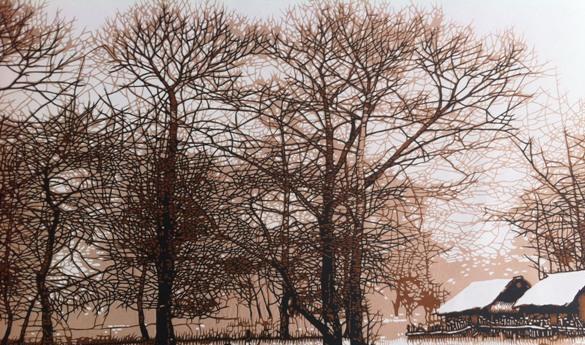Artist Min Li exposes Mason campus to traditional Chinese art
Artist Min Li comes to Mason campus to battle against the "made in China" image of Chinese art.
This month, the Confucius Institute welcomes visitors to its Chinese Paper Cutting Exhibit at Mason. The exhibit is located in the JC 123 Gallery and features both the traditional works of artists from China's Fujian province and the works of modern artist Min Li.
The works have been transported to several universities in the U.S. with the help of Li’s liason to Mason Yunhan Zhang.
Confucius Institute professor and one of the coordinators for the exhibit Ning Yang said, "[Li] wants to change U.S. people's ideas of 'made in China,' and I totally agree with him.”
Yang added that the “made in China” notion in the U.S. implies cheap, low quality products often advertised in popular media. This exhibit is both Zhang's and the Institute's way of challenging that perception.
"These are great works and he wants more people--not just the people who know art, but common people--to know that these are the real China," Yang said.
Paper cutting has been passed down in China for generations. Traditionally, it was part of girls' work though the art form has grown to include male artists. Patterns were inherited through families from grandmother to mother to daughter. Today, paper cutting is still used in numerous occasions such as funerals, weddings, festivals, and ceremonies.
What makes this art so distinct is the meaning in each detail. Recurring symbols like flowers and fish hold just as much impact as the Chinese characters incorporated into different patterns, conveying positive messages such as being plentiful and prosperous throughout the year. Traditional cuts also feature very stylized, often exaggerated depictions of people and animals.
Even color choice is important. Vibrant colors, especially red, are used in order to inspire happiness and colorful lives in people. Black and white are typically reserved for funeral functions.
"So, in paper cutting, it's a sort of culture carrier," said Yang.
The Fujian artists exemplify these traditional techniques. However with Min Li's works, the traditional paper cuts are blended with a Western painting style. Each work depicts a rural landscape that utilizes muted, eye-catching colors (mostly greens, browns, and yellows). The final results very much resemble oil on a canvas.
Li is one of the founders of this modern style, and the technique has gained more followers. Yet the traditional style holds strong. This art form is a window into the daily lives and environments of Chinese people.
"Definitely there is a tradition there," said Yang. "So this is why I think it's significant to bring it here, so that our students and staff--the community--could take a look at the paper cutting here, see the differences, and feel the multicultural perspective."
The Confucius Institute ensures that students can experience the art process firsthand. Professors have set up a kiosk outside the exhibit where visitors can create their own paper cut patterns to take home. They invite students to visit their last workshop opportunity on Oct. 22 from 11am to 1pm, as a way to share in a cultural art form that emphasizes unity and harmony.

